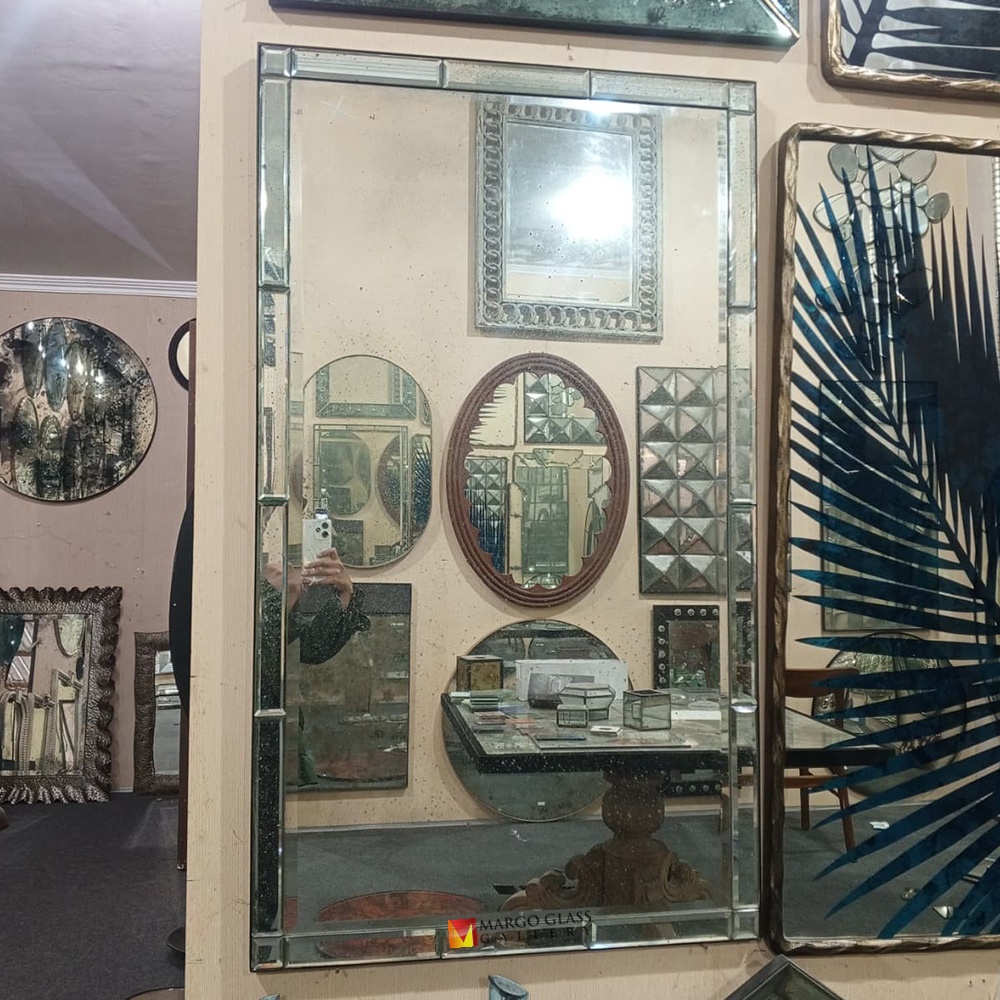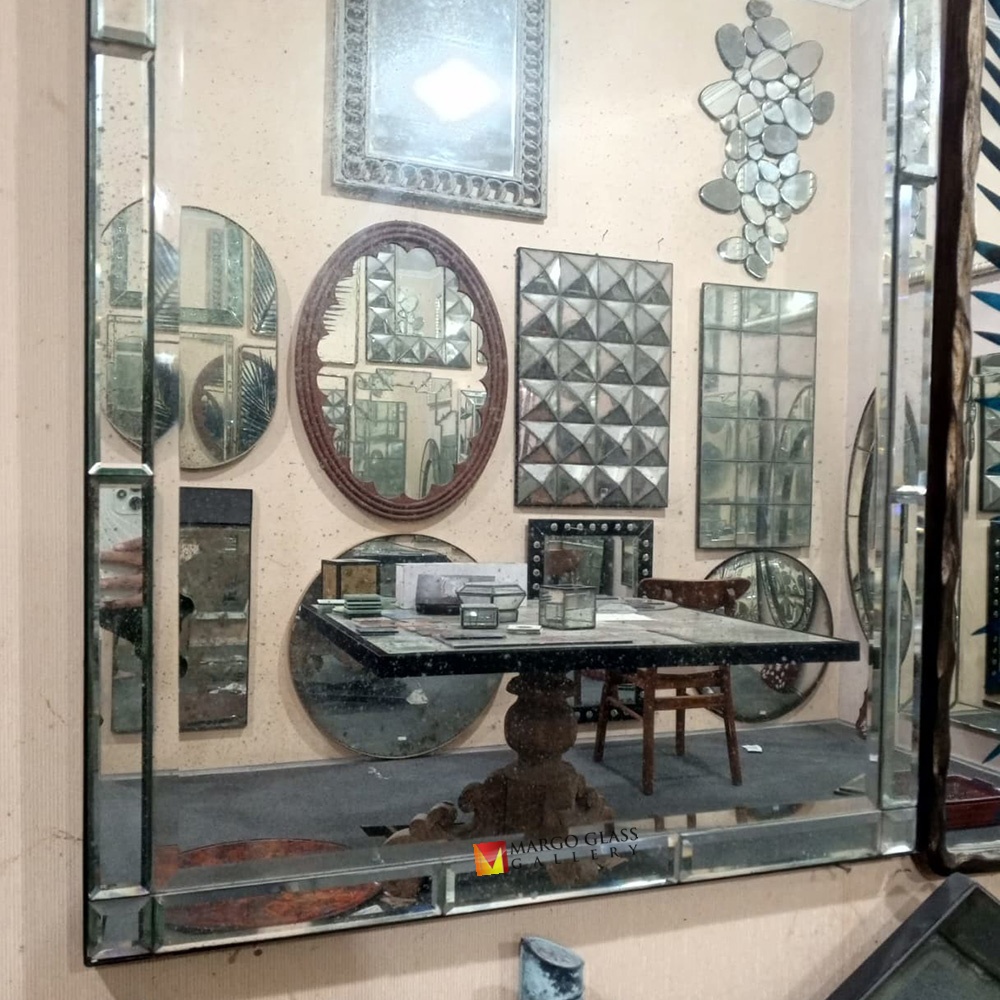
In recent years, a fascinating trend has emerged in the world of portrait photography: the use of antique mirrors as a creative medium. Many modern photographers rely on patina textures, smoky reflections, and spotty aged surfaces qualities found in Old Antique Mirror finishes to build visual depth that no digital filter can replicate. Why? Because the organic, unpredictable charm of Antique Mirror Texture creates emotional atmospheres beyond what software can produce.
This article explores how antique mirrors shape mood, atmosphere, and visual identity in contemporary portrait photography. Using a Rectangular Antique Mirror 120 x 70 cm with 5 mm antique-effect glass and an 18 mm black-finished plywood backing we’ll see how reflections and imperfections influence today’s visual artists. Isn’t it fascinating how something old has become one of the most powerful creative tools for modern photographers?
Antique mirrors offer a complex visual universe sometimes soft, sometimes dramatic, but always emotionally rich. Unlike modern, flawless mirrors, an Antique Wall Mirror introduces narrative depth through its imperfect surface. These imperfections make portrait work feel raw, honest, and intimate.
The mirror referenced in this article a rectangular design with beveled glass pieces surrounding the frame provides the perfect example. Its proportions offer a balanced vertical reflection, while the antique treatment on the 5 mm glass immediately adds a vintage mood. This makes it an ideal prop for portrait photographers seeking depth, warmth, and a touch of nostalgia.

Can a digital filter truly replicate the patina that naturally develops across the surface of an Old Antique Mirror? Hardly. The smoky gradients, scattered spots, and mottled textures are not mere visual “decorations” they are structural phenomena that interact with light in a unique way.
When a photographer shoots through an antique mirror, the light hits the uneven reflective surface, creating a blended, dream-like reflection. The spotty pattern acts almost like a natural vignette, softening the edges of the subject without any artificial manipulation. This authentic Antique Mirror Texture is created by time, chemistry, and aging not by pixels.
Isn’t this kind of authenticity exactly what many editorial photographers seek today?
Every photographer has a signature look and antique mirrors often play a crucial role in forming that visual identity. By using a mirror with a smoky silver tone, bevel-trimmed frame, and strong rectangular form like the 120 x 70 cm example, photographers can establish a recognizable aesthetic: dramatic yet refined, vintage yet modern.
The unique reflections of an antique mirror become part of the photographer’s personal brand. Viewers can often identify the photographer’s style simply from the soft haze, muted contrast, or patina marks present in the portrait. In this way, the antique mirror becomes more than a prop it becomes part of the photographer’s visual fingerprint.

Why does the vintage mood remain so beloved in an era dominated by digital imagery? The answer lies in emotion. Portrait photography is not only about capturing clarity it’s about capturing feeling. When subjects are photographed through an antique mirror, the resulting images feel more introspective, emotional, and atmospheric.
The smoky antique surface softens the skin naturally, the patina adds mystery, and the imperfect reflection evokes a sense of nostalgia. This mood is difficult to recreate through editing because editing alters pixels not the physical interaction between light, glass, and shadow.
Using an antique mirror requires more than simply positioning a subject in front of the glass. Here are a few effective techniques:
The beveled frame and black-finished 18 mm plywood backing of this particular mirror also make it a stable, reliable prop for studio setups.
In the editorial and fashion world, visual storytelling is everything. Antique mirrors provide layered depth, natural texture, and emotional dimension three qualities that instantly elevate a portrait.
A Rectangular Antique Mirror like the one discussed here creates vertical composition lines ideal for editorial shoots. It adds complexity without requiring elaborate sets. Fashion photographers often use antique mirrors to show duality, create dreamy reflections, or enhance retro-inspired themes. That’s why stylists, art directors, and fashion photographers consistently turn to antique mirrors as one of their favorite creative tools.

What should photographers consider before selecting an antique mirror?
An antique mirror is more than a backdrop or reflective surface it is a mood-maker, an identity-builder, and an emotional amplifier in portrait photography. Patina, smoky gradients, and spotty aged textures create a vintage atmosphere that digital editing simply cannot duplicate. As a result, a photographer’s visual persona emerges not only from technique or camera settings, but from the tools they choose including a carefully selected antique mirror.
If you’re a photographer seeking to build emotional depth and visual signature in your portraits, why not explore the unique power of antique mirrors? Contact us at Antique Mirror Company to find high-quality antique mirrors crafted for creative, expressive, and unforgettable portrait photography.
By : Wulan
We are a leading manufacturer and wholesaler of Venetian mirrors in Indonesia. With our commitment to elegant design, superior quality, and competitive prices, we cater to individuals, wholesalers, and even large-scale projects such as hotels.
Whether you need advice on designs or sizes, feel free to consult with us. Let us be your reliable source for exquisite Venetian mirrors.